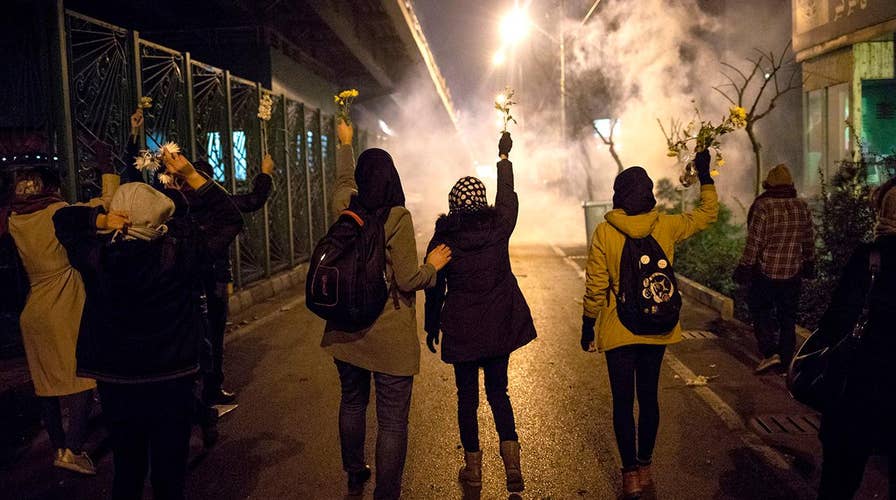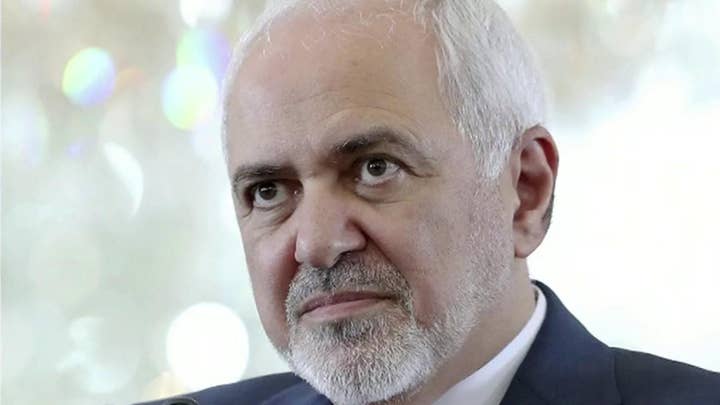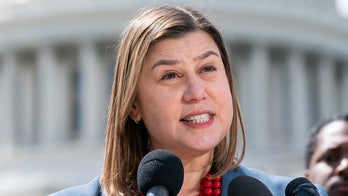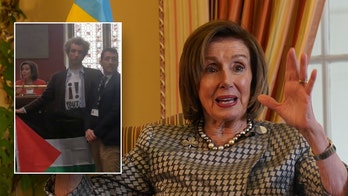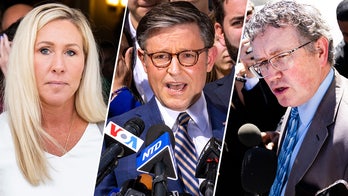What Iran protests against the regime mean for the country's future
Iran expert Maysam Behravesh criticized President Donald Trump’s 'hypocrisy' on Iran and argued why the protests 'are a far cry from an endorsement of the Trump administration.'
Over the past few years, tensions over Iran's nuclear ambitions have reached unprecedented levels.
In 2018, President Trump withdrew the U.S. from the Iran nuclear deal -- a pact known as the Joint Comprehensive Plan of Action (JCPOA) penned in 2015 with other countries that promised to ease sanctions on Tehran in exchange for the country curbing its nuclear enrichment.
Since then, Iran has repeatedly breached the amount of enriched uranium it was allowed under the accord.

In this photo released by the official website of the office of the Iranian supreme leader, Supreme Leader Ayatollah Ali Khamenei speaks in a meeting in Tehran, Iran, Feb. 5, 2020. (Office of the Iranian Supreme Leader via AP)
Though immediate tensions stem from the United States’ unilateral withdrawal from the nuclear deal in 2018 -- and Iran's subsequent retaliation -- the conflict goes back decades.
The following is a condensed history of U.S. sanctions against Iran:
1970s
Iran’s nuclear ambitions date back to the 1960s. But those aspirations came to a halt after the Iranian Revolution of 1979 severed U.S.-Iranian ties and damaged the country’s relationship with the West.
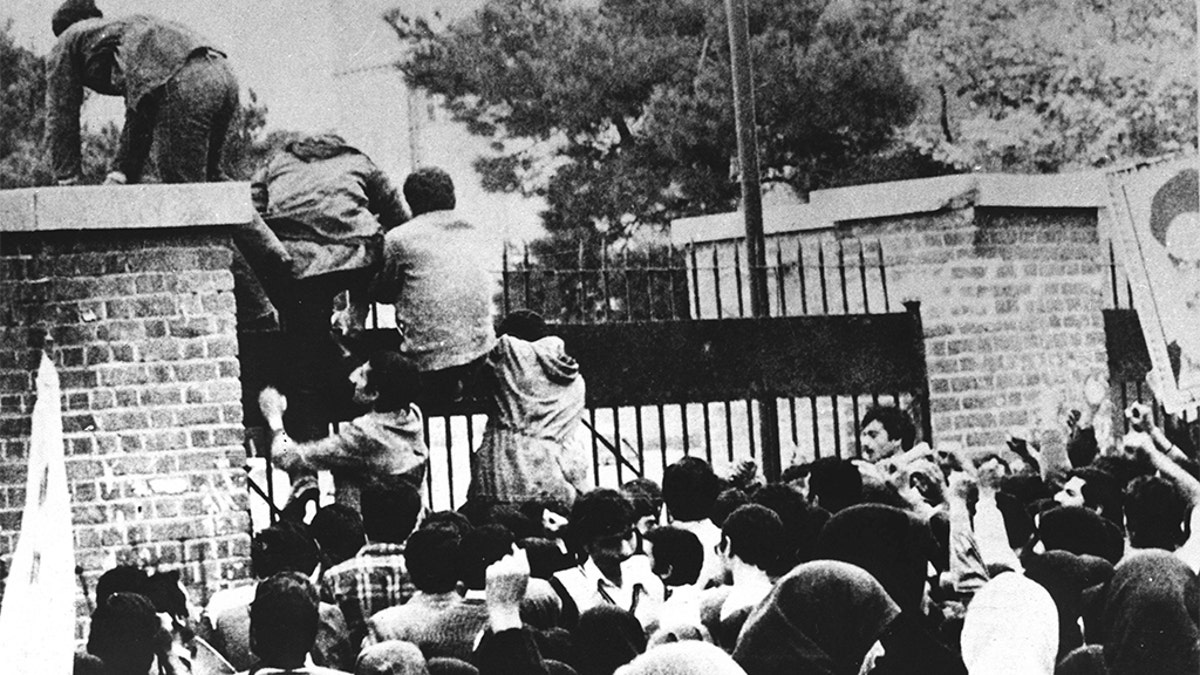
Iranian students climb over the wall of the US embassy in Tehran 04 November 1979. (STR/AFP via Getty Images)
Then-President Jimmy Carter imposed sanctions on Iran after a group of militant students stormed the American embassy and took hostages. The brazen act was a response to Carter allowing the highly unpopular Shah of Iran to receive medical treatment in the U.S.
1980s
The U.S. State Department added Iran to its list of state sponsors of terrorism and increased sanctions.
1990s
1992: Congress passed the Iran-Iraq Arms Nonproliferation Act, which prohibited the transfer of goods or technology to Iraq or Iran that would contribute to either country’s “acquiring chemical, biological, or nuclear weapons or advanced conventional weapons.”
1996: Congress passed the Iran-Libya Sanctions Act, which penalized foreign and U.S. investments exceeding $20 million in Iran’s energy sector in one year.
2000s
Attempts by the International Atomic Energy Agency (IAEA) and Iran to suspend its enrichment and reprocessing-related activities went awry. The Bush administration at the time said it was willing to join multilateral talks if Iran took verifiable steps to suspend clear enrichment.
In his first year in office, then-President Barack Obama said the U.S. is willing to “extend a hand” if Iran was “willing to unclench [their] fist” in return.
The U.K., France and the United States announced that Iran was building a secret uranium-enrichment site near the city of Qom.
2010s
The Obama administration began secret talks with Iranian officials.
2015
The JCPOA was signed by Iran and several world powers, including the U.S., under then-President Obama.
The deal reduced Iran’s ability to produce two components used in making nuclear weapons: plutonium and uranium, in exchange for the U.S. easing economic sanctions.
“Every pathway to a nuclear weapon is cut off,” Obama said at the time. “This deal is not built on trust. It is built on verification.”
2018
May: President Donald Trump -- who had lambasted the Iran nuclear deal throughout his presidential campaign -- signed a memorandum unilaterally withdrawing the U.S. from the agreement, calling it “decaying and rotten.”
He said the U.S. would “not be held hostage to nuclear blackmail” and will not allow “a regime that chants ‘death to America’” to get nuclear weapons.
Iran, France, Britain and Germany said they would stay with the pact.
August-November: The U.S. reimposed economic sanctions that targeted Iran’s energy, financial, shipping and shipbuilding industries. Iran threatened retaliation if the remaining countries in the pact didn't mediate.
2019
April: President Trump designated Iran’s Islamic Revolutionary Guard Corps (IRGC) as a foreign terrorist organization (FTO), despite objections from the U.S. Department of Defense that doing so would make it harder for American diplomats and military officers to work with allies in the region.
The Trump administration informed nations they will no longer be exempt from U.S. sanctions if they continue to import oil from Iran.
AMB. RICHARD GRENELL CRITICIZES GERMANY FOR PLANNED CELEBRATION OF IRAN'S TERROR REGIME
May: Iran announced it will exceed the low-enriched uranium stockpile limit it agreed to in the nuclear deal.
June-December: The remainder of the year saw tensions escalate between the U.S. and Iran. The U.S. accused Iran of multiple attacks on oil tankers in the Persian Gulf and an attack on oil installations in Saudi Arabia.
CLICK HERE TO GET THE FOX NEWS APP
In December, the U.S. blamed Iranian-backed militias inside Iraq for the death of a U.S. citizen at a military base. Militias protested outside the American embassy in Baghdad.
2020
January: President Trump authorized a drone strike that killed Iran’s top military commander, Gen. Qassem Soleimani. Five days later, Iran launched ballistic missile attacks targeting U.S. military and coalition forces in Iraq. No one was killed in the attacks, but multiple service members were treated for traumatic brain injuries.
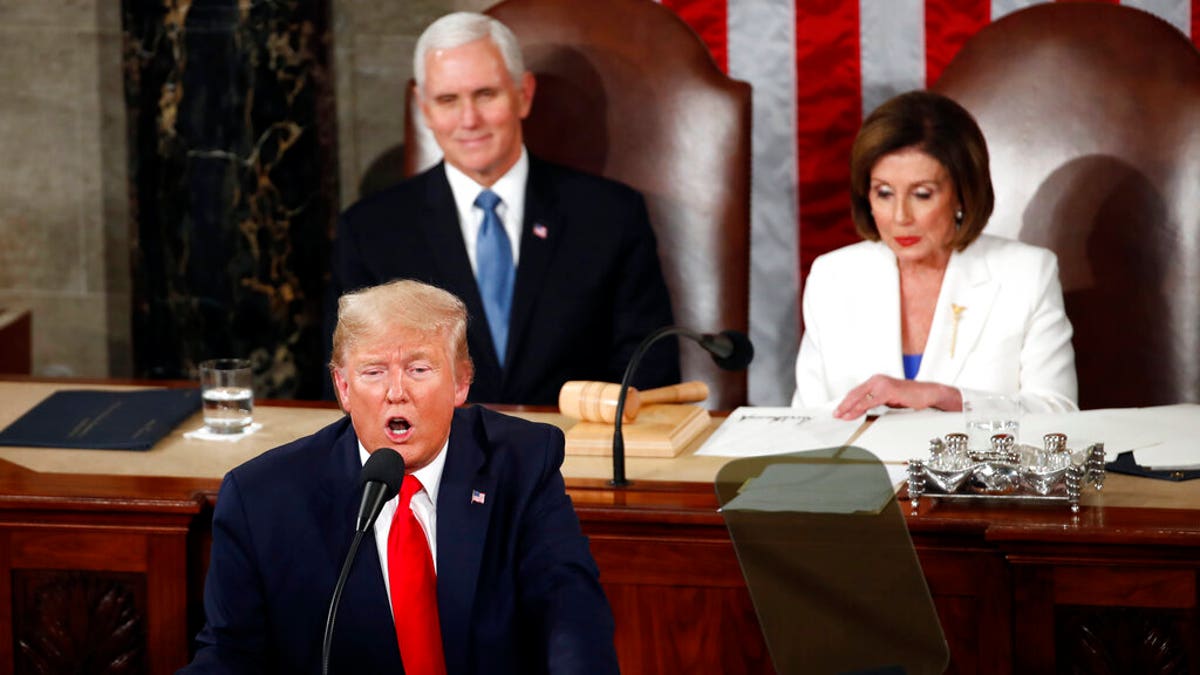
President Donald Trump delivers his State of the Union address to a joint session of Congress on Capitol Hill in Washington. (AP)
In President Trump’s State of the Union speech, he said the U.S. can help Iran “make a very good and short-time recovery” from the “powerful sanctions” imposed by the United States. He also defended the killing of Soleimani, whom he called a "ruthless butcher."
The Associated Press contributed to this report.
